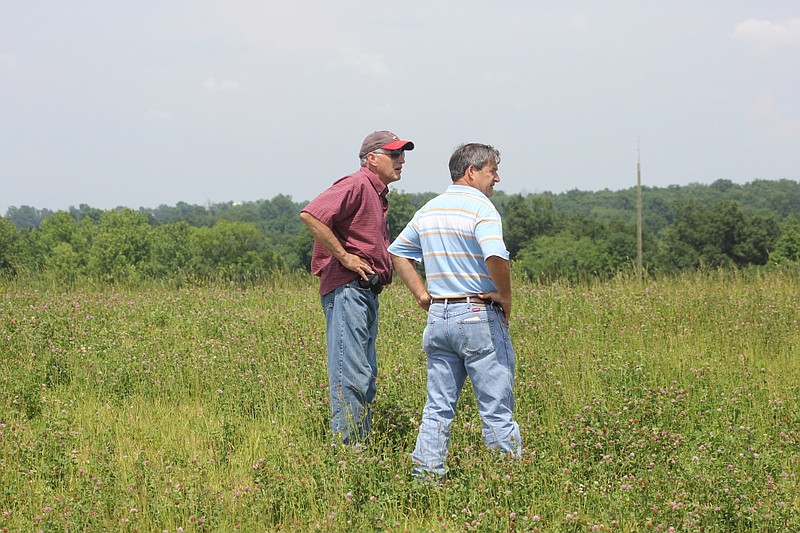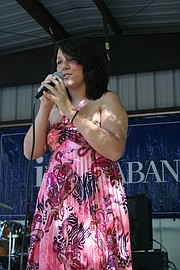A Missouri Department of Natural Resources environmental specialist visited Fulton's landfill site Friday and said vegetative cover has significantly improved.
Among many other qualifications the city must meet before the state will allow it to declare the landfill officially closed, Fulton must achieve an 80-percent cover of grass, fescue, clover or weeds to prevent erosion. Soil quality problems and drought conditions over the past two years have made that process difficult, but DNR and city officials are both pleased with the amount of growth that has sprouted up so far this year.
Larry Teson, DNR environmental specialist, noted the landfill looked "significantly" better now than it did when he began working with the city on improving grass cover a year ago.
"Mother Nature in the last two summers hasn't been cooperative," Teson said. "It started small... but in this time here, this looks really nice.
Teson said that within a year or two, the grass should be where it needs to be to close the landfill.
Since the city stopped using the sanitary landfill in May 2011, Solid Waste Manager J.C. Miller said it's been a long road struggling with growing through two consecutive drought seasons. The city received a fine for compliance issues with state standards for closing landfills.
Additionally, the landfill must also meet certain requirements in water sampled from the ground there, and levels of methane output.
Miller said both have been good lately, and he was "very excited" to finally see some vegetative growth there. The city has been working with Teson and Richard Hoormann, agronomy specialist with the University of Missouri Extension Center, on ways to improve soil quality and grass coverage.
The city has seeded about 450 pounds of various clovers, fescue and other grasses per acre at the landfill. Teson said that with varying topsoil qualities there, ranging from ash to clay with little to no organic material, soil quality at the landfill has actually exacerbated the drought - soil there dries out very quickly and does not retain moisture as well.
"Other programs look at resources and don't realize you aren't going to change it overnight or in one growing season," Teson said.


